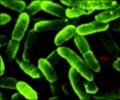Nearly 500,000 patients suffer from Clostridium difficile infection (CDI) each year. Of these, nearly 30,000 died within 30 days after being diagnosed.

The Centers for Disease Control and Prevention reports that nearly 500,000 patients suffer from CDI each year. Of these, nearly 30,000 died within 30 days after being diagnosed. Antibiotic use is a factor in 80 percent of CDI cases, Scaria pointed out.
‘While foodborne illnesses, such as E. coli and Salmonella resolve themselves within a week, symptoms of Clostridium difficile infection, known as CDI, persists.’





"Clostridium difficile is an opportunistic pathogen," he said. Broad spectrum antibiotics, such as clindamycin, kill all the normal gut microbes, which then gives Clostridium difficile a chance to form spores that are resistant to antibiotics. The bacteria produce toxins that damage the colon so much that it may need to be removed, he explained. Though patients get temporary relief with antibiotics, the diarrhea and abdominal cramps return a month or two after treatment in 25 percent of cases, according to Scaria. Those who experience a second episode have a 90 percent chance of the infection returning.
Doctors found that seeding the bowel with a healthy donor stool has helped more than 99 percent of CDI patients, according to Scaria. He hopes to identify which gut bacteria inhibit growth of Clostridium difficile and then incorporate them into a probiotic mixture that can be consumed to treat a variety of intestinal ailments.
"Gut microbiota is a rich source of next-generation medicine," Scaria said. However, finding the right gut bacteria will be challenging.
"The community of microbes in the gut is so big," he said, noting that the number of genes in gut microbiota is 10 times greater than the human genome. The Human Microbiome Project, a National Institutes of Health project to sequence microbes in the body, found that one person can harbor as many as 1,000 different bacterial strains.
Advertisement
"I don't know if one strain alone is enough or if two are needed," he said. The small bioreactors, which were installed in December, will allow the researchers to do in two months what would have taken two years.
Advertisement
Source-Newswise












